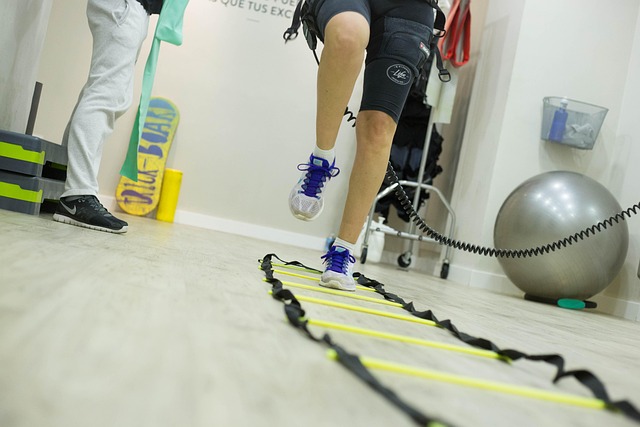In the realm of exercise, nutrition is often the quiet hero that powers every stride, sprint, and stretch. Whether you’re an elite athlete or a weekend cyclist, the science behind sports nutrition offers a roadmap for sustaining energy, enhancing performance, and fostering long‑term well‑being. By treating food as both fuel and medicine, athletes can transform their training sessions into opportunities for growth and recovery.
Foundations of Sports Nutrition
The core of sports nutrition lies in understanding how macronutrients—carbohydrates, proteins, and fats—interact with the body’s metabolic pathways. Carbohydrates are the primary source of glucose, which muscles rely on during high‑intensity efforts. Proteins provide amino acids that rebuild and repair muscle fibers, while fats offer a dense energy reserve for endurance activities. An effective nutrition plan balances these components to meet the demands of training volume, intensity, and individual physiology.
- Carbohydrates: 45–65 % of total calories for most athletes.
- Protein: 1.2–2.0 g per kilogram of body weight daily.
- Fats: 20–35 % of total calories, emphasizing unsaturated sources.
Micronutrients and Hydration: The Invisible Engines
While macronutrients dominate the conversation, micronutrients—vitamins and minerals—play indispensable roles in energy production, immune function, and bone health. For example, iron is crucial for oxygen transport; magnesium supports muscle contraction; and vitamin C acts as an antioxidant that helps mitigate exercise‑induced oxidative stress. Hydration, too, is a silent performer; even a 2 % deficit in body weight can impair performance, cognitive function, and recovery.
“Hydration is a performance enhancer, not a hydration hazard.”
Daily water intake should be guided by thirst, sweat rate, and environmental conditions. Sports drinks may be beneficial during prolonged sessions exceeding one hour, especially in hot or humid settings, to replenish electrolytes lost through sweat.
Timing and Meal Planning
Strategic timing amplifies the benefits of sports nutrition. Consuming a carbohydrate‑rich meal or snack 2–4 hours before training optimizes glycogen stores and ensures that blood glucose remains steady during activity. A quick source of simple carbs—such as a banana or a sports gel—taken 30–60 minutes before high‑intensity work can provide an immediate spike in energy.
- Pre‑exercise: 3 g of carbohydrates per kilogram body weight.
- During exercise: 30–60 g of carbs per hour for sessions >1 hour.
- Post‑exercise: 0.25–0.4 g of carbs per kilogram within 30 minutes.
Recovery Nutrition: Building the Bridge Back
Recovery is the quiet, critical phase where adaptations to training occur. Post‑workout meals should contain a blend of carbohydrates and protein in a ratio of roughly 3:1 to 4:1, promoting glycogen restoration and muscle protein synthesis. A balanced plate might include grilled chicken, brown rice, and steamed vegetables, or a smoothie featuring whey protein, berries, and a handful of spinach.
In addition to macronutrients, antioxidants from fruits and vegetables help dampen inflammatory responses, while omega‑3 fatty acids support joint health and cellular repair.
Nutrition for Different Activities
Sports demand specific nutritional profiles. Endurance athletes prioritize carbohydrate loading and fluid management, strength athletes focus on protein intake and timing, and power athletes balance quick energy sources with high‑intensity fueling. The following table (in prose) outlines key differences:
Endurance: 7–10 g carbs per minute, fluid intake matched to sweat loss.
Strength: 1.2–1.8 g protein per kg, meal spacing every 3–4 hours.
Power: High‑glycemic foods pre‑event, rapid carb sources mid‑event.
Common Misconceptions in Sports Nutrition
Despite the abundance of information, several myths persist:
- “Carbs are bad.” Carbohydrates are essential for performance; the problem lies in excess or poor quality.
- “Protein is only for bodybuilders.” All athletes benefit from adequate protein for repair and growth.
- “You don’t need supplements.” Whole foods provide most nutrients, but targeted supplements can fill gaps when dietary intake is insufficient.
Integrating Nutrition into a Healthy Lifestyle
Sports nutrition is most effective when woven into a broader healthy lifestyle. Consistent sleep, stress management, and regular physical activity create a synergistic environment that enhances nutrient absorption and utilization. Mindful eating—paying attention to hunger cues and savoring meals—further supports sustained energy levels and reduces the risk of overconsumption.
“Nutrition is not a short‑term fix; it’s a lifelong partnership.”
Practical Tips for Everyday Athletes
- Plan meals around training schedules: pre‑meal 2–3 hours, snack 30–60 minutes, and recovery meal within 45 minutes.
- Choose complex carbs (whole grains, legumes) for sustained energy and fiber.
- Include lean protein (fish, poultry, tofu) and healthy fats (avocado, nuts) in every meal.
- Monitor hydration: weigh yourself before and after sessions to estimate sweat loss.
- Use a food diary or app to track macronutrient intake and adjust as needed.
The Role of Supplements in Sports Nutrition
Supplements are not a replacement for food but can enhance performance when used appropriately. Common additions include whey protein powders for post‑exercise recovery, branched‑chain amino acids (BCAAs) for muscle maintenance, and electrolyte tablets for prolonged sessions. It’s essential to consult with a registered dietitian or sports nutritionist to determine whether a supplement aligns with individual goals and health status.
Future Directions: Personalized Sports Nutrition
Advancements in nutrigenomics and wearable technology promise a future where nutrition recommendations are tailored to genetic profiles, metabolic responses, and real‑time biometric data. By integrating continuous glucose monitoring, sweat analysis, and personalized dietary algorithms, athletes can refine their fueling strategies with unprecedented precision.
Ultimately, sports nutrition is a dynamic field that evolves alongside scientific discoveries and societal shifts. By grounding choices in evidence, honoring the body’s signals, and embracing a holistic approach to health, athletes can cultivate a sustainable path to optimal performance and enduring vitality. The interplay of balanced macronutrients, essential micronutrients, strategic timing, and mindful habits forms a resilient framework that supports not only the gym or track but also a healthy, active life beyond the arena.




